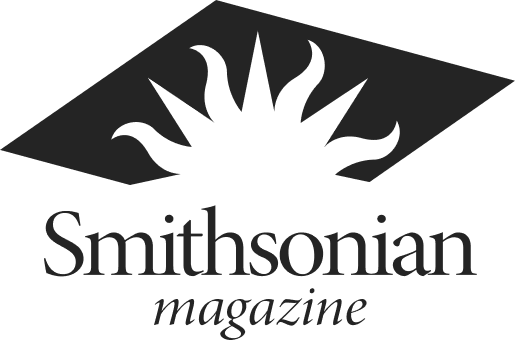History of Science
How Do Animals React to a Total Solar Eclipse? Scientists Document Strange and Surprising Behaviors
Nature enthusiasts work with researchers to figure out how creatures respond to the celestial phenomenon
The Eclipse Chaser Who Led an Expedition Behind Enemy Lines During the Revolutionary War
In 1780, astronomer Samuel Williams journeyed to British-controlled territory to view a total solar eclipse
For Most Mammal Species, Males Actually Aren't Larger Than Females, Study Finds
New research upends a long-held theory that male mammals tend to be bigger than their female counterparts
Long Overlooked, This 11th-Century Astronomical Device Documents Scientific Exchange Among Muslims, Jews and Christians
The astrolabe features Hebrew and Latin inscriptions added by different owners over time
The Dirty Secret About How Our Hands Spread Disease
The human hand is an incredible tool—and a deadly threat
A History of Total Solar Eclipses Seen by Astronauts From Outer Space
Since the Gemini 12 mission in 1966, a handful of people have seen these stunning celestial events from orbit—or watched the moon’s shadow pass over Earth
How Ancient Texts Can Shed Light on Auroras
Documenting episodes of the phenomenon thousands of years ago may help us predict damaging solar storms in the future
See What Charles Darwin Kept in His 'Insanely Eclectic' Personal Library, Revealed for the First Time
On the English naturalist's 215th birthday, more than 9,000 titles from his expansive collection are now accessible online
California Grizzlies Weren't as Big—or Bloodthirsty—as People Once Thought
The now-extinct bears were mostly vegetarians and measured about the same size as today's North American grizzlies
Building Used by Marie Curie Saved From Demolition
Cultural heritage supporters are hoping to see the facility listed as a protected site
This Device Might Be England's Oldest Dated Scientific Instrument
The 712-year-old artifact is a horary quadrant, a medieval tool used to tell time based on the position of the sun
The 'Comet of the Century' Failed to Impress, but It Wasn't Such a Disaster After All
Highly anticipated before its arrival in late 1973, Kohoutek became an interplanetary punchline. But astronomers may have gotten the last laugh
Modern Medicine Traces Its Scientific Roots to the Middle Ages
Contrary to popular belief, early medieval doctors relied on rational deduction to understand and treat disease
New Synthetic Horseshoe Crab Blood Could Mean Pharma Won't Bleed the Species Dry
The “living fossils” have been vital for testing intravenous drugs, but a few large pharmaceutical companies are using a lab-made compound instead
How to Watch the Draconid Meteor Shower This Weekend
Though it’s usually a smaller display, the Draconids have historically produced breathtaking outbursts of shooting stars known as "meteor storms"
How Rare Is the 'Super Blue Moon' Appearing in Skies Later This Week?
And why do they even call it a "blue moon" when it won't actually be that color?
Students Unearth Forgotten 142-Year-Old Observatory Buried on Michigan State's Campus
Archaeology students have been working at the site since workers happened upon it in May
See Tables Crafted From Human Tissue, a Toad With Eggs on Its Back and More at This London Museum
The newly reopened Hunterian Museum acknowledges the ethical quandaries posed by its collection of anatomical specimens
What We're Still Learning About Rosalind Franklin’s Unheralded Brilliance
Using new historical evidence, two scientists argue the female chemist was more involved in discovering DNA's structure than she got credit for
Henrietta Lacks' Virginia Hometown Will Build Statue in Her Honor, Replacing Robert E. Lee Monument
Lacks' unique cancer cells were taken without consent and used for medical breakthroughs
Page 1 of 6
:focal(800x602:801x603)/https://tf-cmsv2-smithsonianmag-media.s3.amazonaws.com/filer_public/87/d6/87d61ed0-16df-452f-9d5e-7710a4dcd105/eclipseanimals-v2.jpg)
:focal(700x527:701x528)/https://tf-cmsv2-smithsonianmag-media.s3.amazonaws.com/filer_public/67/54/67542db1-d75f-411b-8334-03503fa23d7f/eclipse4.jpg)
:focal(1957x1323:1958x1324)/https://tf-cmsv2-smithsonianmag-media.s3.amazonaws.com/filer_public/b3/7b/b37b38b2-5ed2-4669-8957-a961d4e7f606/gettyimages-474621363.jpg)
:focal(446x335:447x336)/https://tf-cmsv2-smithsonianmag-media.s3.amazonaws.com/filer_public/f8/89/f8896561-9ab3-4b6d-97e8-a60ccedbf192/dr_federica_gigante_examining_the_verona_astrolabe_credit_federica_candelato_1.jpeg)
:focal(800x602:801x603)/https://tf-cmsv2-smithsonianmag-media.s3.amazonaws.com/filer_public/1d/d2/1dd28e99-e399-4ff7-8e00-93e8918bd6e2/gettyimages-1214692537_web.jpg)
:focal(2784x1856:2785x1857)/https://tf-cmsv2-smithsonianmag-media.s3.amazonaws.com/filer_public/00/ab/00ab5453-811b-405b-9a04-08564356478b/iss063-e-31763.jpeg)
:focal(800x602:801x603)/https://tf-cmsv2-smithsonianmag-media.s3.amazonaws.com/filer_public/72/ba/72ba90f4-730a-47b5-acd1-80a445b88a52/aurora_nagoya_1770_web.jpg)
:focal(573x426:574x427)/https://tf-cmsv2-smithsonianmag-media.s3.amazonaws.com/filer_public/11/0a/110a8858-6904-4e4d-afc1-0faa7ec74fde/1882_haig_darwins_a205_001.jpg)
:focal(1024x585:1025x586)/https://tf-cmsv2-smithsonianmag-media.s3.amazonaws.com/filer_public/d3/11/d3111f19-4c47-4b13-99ff-9bf6b452c3cb/49185352476_9ee103e012_k.jpg)
:focal(1845x1370:1846x1371)/https://tf-cmsv2-smithsonianmag-media.s3.amazonaws.com/filer_public/ee/02/ee02955c-a636-4f45-ace5-8c12b08504ef/gettyimages-613462004.jpg)
:focal(2000x2000:2001x2001)/https://tf-cmsv2-smithsonianmag-media.s3.amazonaws.com/filer_public/e7/40/e740caf9-626a-495c-91d4-8f2f3acc3a64/quadrant____-_copy.jpg)
:focal(700x527:701x528)/https://tf-cmsv2-smithsonianmag-media.s3.amazonaws.com/filer_public/4a/9b/4a9bd511-228b-4569-ab1e-a8ceebffb0d7/kohoutek3.jpg)
:focal(700x527:701x528)/https://tf-cmsv2-smithsonianmag-media.s3.amazonaws.com/filer_public/ce/b6/ceb64f57-8510-4d00-a71d-47a68fe6d9f6/manuscript.jpg)
:focal(512x349:513x350)/https://tf-cmsv2-smithsonianmag-media.s3.amazonaws.com/filer_public/48/11/4811c219-7a18-485d-8d48-232104b8460d/gettyimages-1241981966.jpg)
:focal(1060x711:1061x712)/https://tf-cmsv2-smithsonianmag-media.s3.amazonaws.com/filer_public/e9/1b/e91bde8d-41cf-4087-bbbf-d1b0fb37221d/gettyimages-976216668.jpg)
:focal(1024x541:1025x542)/https://tf-cmsv2-smithsonianmag-media.s3.amazonaws.com/filer_public/1e/f7/1ef72aa5-b7ea-4349-854e-d1f7fadd8241/49641911586_af5537a2ea_k.jpg)
:focal(750x500:751x501)/https://tf-cmsv2-smithsonianmag-media.s3.amazonaws.com/filer_public/09/c6/09c6c71c-ca3d-476f-840d-1181e2553054/historicalphotoofmsuobservatory.jpg)
:focal(700x527:701x528)/https://tf-cmsv2-smithsonianmag-media.s3.amazonaws.com/filer_public/03/2f/032fd5fb-7bbe-4b1f-9cf8-5c16ede4f05f/skin-table.jpg)
:focal(1976x2166:1977x2167)/https://tf-cmsv2-smithsonianmag-media.s3.amazonaws.com/filer_public/ba/46/ba46c84b-8428-4a63-9257-b2af7c588758/gettyimages-590675971.jpg)
:focal(2742x1854:2743x1855)/https://tf-cmsv2-smithsonianmag-media.s3.amazonaws.com/filer_public/95/1a/951a2166-1675-4504-bc5a-eb987b443245/gettyimages-1234369528_1.jpg)

